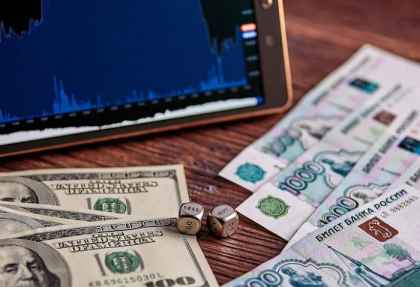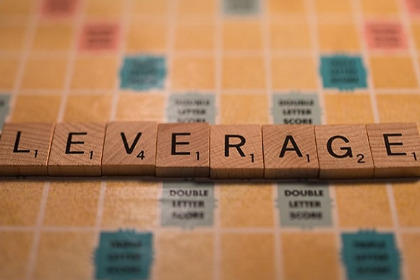Trading journal is important to learn from past successes and mistakes. Are there any specific setups that you need to apply if you're day trading?
Every day we are exposed to tons and tons of data. For traders, the most crucial data are market conditions, graphic and trend changes, forex rates, etc. Full-day traders might expend their time checking the data changes for more than 12 hours. But for day traders who only spend a few hours per day, they might not have the time to always keep an eye on those changes.
Considering the short trading time, it is very advised for day traders to make a trading journal. A trading journal can help you organize the information you got from the day trading each day. Especially to keep track of your achievements and mistake, strategies, as well as the change of trends in your daily trading life.
However, keeping a journal like this might overwhelm you if done manually with so many papers. How do you keep a trading journal correctly? Well, in this article I will give you some advice you can use to improve your trading journal!
Work Smart
The journal's source of information came from trading experience. This means it comes from the computer and whatever trading apps or websites you use to trade. The speed of handwriting surely cannot match the speed of data passing by. So, with the current technology, instead of doing everything by hand, it will be more convenient to take a screenshot whenever you find a crucial point during the trades.
These screenshots then can be compiled into one big folder per day, or organized in a note file with annotations. A picture tells a thousand words, so you can learn how to find the details in each graph and trade that you make through the screenshots.
Comparing each screenshot of the graph can help you to formulate the right strategy. By comparing each day's data, you can find which strategy gives you more profit and which one makes you lose money. Learning from past mistakes also helps you understand how trading works in areas you might not understand before.
If you are still unsure how to make it works, you can start by making notes on a cloud-based app like Google Docs and Spreadsheet. Or, you can just download some journaling apps to help you. Spreadsheet software can be very helpful since you can include cell equations that quickly calculate your profit or loss.
Mark Your Chart
With the pictures on hand, you can now start to mark the information you got from the charts and graphs. Charts and graphs are the most crucial data we got from trading. Every up and down of the candle shape can determine your win and loss. Thus, you must mark the chart too. This mark can be used to determine the trend, target, and even the market condition as a whole.

However, marking the chart can be very difficult and it needs experience to do it perfectly. Here are some of the steps you can follow to improve your chart marking!
- First, it is very important to include the price changes from one to two hours before the trade begins.
- Second, write down the condition of the market when you start trading.
- Third, you can mark your starting point with a familiar symbol like a plus (+) or dash (-) to signify whether you are early or late from the trading timeframe. If you are late, you might want to add if there are some trade signals earlier that you might miss.
In the course of trading, look out for major economic events and mark them down. You can also use different types of symbols to show whether you are trading or not at that point and if it affects your trade in any way. At the same time, always note down the tendencies and market conditions you notice. Write down whether you miss a trade opportunity, an error, and other significant information you might need.
After that, use a symbol in the graph to mark when you stop trading. Summarize your experience by writing down the wins and losses as well as the total profit and loss. But, you might want to do it with pips, cents, and ticks/points to avoid misreading the information due to fluctuation in position size.
Quite an easy task right? Or is it?
It should be noted that while it is important to mark the chart, make sure your marks didn't distract you from the key information. If you have too many marks in one graph or screenshot, you might want to copy the same picture and make different marks for different kinds of information. You can also save the pictures separately to avoid mixing up your data.
Review Your Progress
While taking notes and keeping track of your daily trading life is important, if you are not reviewing your records and learning from them, it won't give you the intended purpose. Review your trades at least at the end of the week or every two weeks to know your progress in trading.
You can compare it with the previous week to see if you have improved or become worse. You can spot your strength and strategy and common mistakes, and prepare your mindset for the next week or two weeks. Pair up the screenshots, markings, and notes, and you might find yourself having the best weapon to ensure your profit in the next trades.
The Takeaways
For day traders who can only expense a few hours a day trading, having a trading journal might become very helpful to keep track of your experience. It can be used to determine your best strategy, trend changes, market conditions, and many more. With the advance in technology, this journal can be automated using computer screenshots and journaling apps, google docs, and spreadsheet apps.
Inside the journal, make sure to mark significant market events, fluctuations, and trend changes. By marking the graphs and important events, you can use them as comparable data for your next trade. Thus, you can be more prepared to face any kind of situation in trading.

 Dedicated FREE FOREX VPS
Dedicated FREE FOREX VPS Free FOREX Virtual Private Server
Free FOREX Virtual Private Server MT4 Demo Contest, Get $500
MT4 Demo Contest, Get $500 Sign Up for an Account, Claim 60% Deposit Bonus
Sign Up for an Account, Claim 60% Deposit Bonus Free MT4/MT5 VPS 2024
Free MT4/MT5 VPS 2024 Send E-mail and Get Free Merchandise
Send E-mail and Get Free Merchandise $1K Refer a Friend Bonus for Pepperstone Pro clients
$1K Refer a Friend Bonus for Pepperstone Pro clients Maximize Your Earnings with 100% Deposit bonus
Maximize Your Earnings with 100% Deposit bonus Trade to Win, $5,000 Monthly Demo Contest
Trade to Win, $5,000 Monthly Demo Contest Claim 30% + 15% Deposit Bonus from LiteFinance
Claim 30% + 15% Deposit Bonus from LiteFinance








1 Comment
Cindy
Oct 25 2022
Yes, finally someone is talking about journaling for deals. A diary is like a diary to me. It contains data about each progress and his daily trading process, which could be the key to confirming my trading strategy. Actually follow the steps in the article to write the journal. It's worth it for your trading experience.